Sheshan State Forest Park
Shanghai Sheshan National Forest Park was approved by the Ministry of Forestry in June 1993. It is located in Songjiang, an ancient city in the western suburbs of Shanghai. It covers an area of 401 hectares and is 30 kilometers away from the city center. Twelve peaks in the park move from southwest to northeast, winding for 13 kilometers, making the Shanghai Plain in Ma Ping Chuan present a beautiful landscape of mountains and forests. Sheshan National Forest Park in Shanghai belongs to subtropical monsoon climate. The forest vegetation types are evergreen broad-leaved forest and evergreen deciduous broad-leaved mixed forest.
As of March 2013, the scenic spots that have been built and opened to the outside world are Dongshe Mountain Garden, Xishe Mountain Garden, Tianma Mountain Garden and Xiaokunshan Mountain Garden.
Shanghai Sheshan National Forest Park is a national AAAA-level tourist attraction, "National Civilized Forest Park" and "the most influential forest park".
Historical evolution
In June 1993, the Ministry of Forestry approved the establishment of Sheshan National Forest Park in Shanghai.
By the end of 1994, Dongshe National Forest Park had begun to take shape.
By the end of 1998, scenic spots such as Dongshe Mountain National Forest Park, Xiyushan National Forest Park, Baibi Garden, Yushan Cableway and Sheshan Slide Cableway were built and opened.
In 2000, it won the first batch of "4A" tourist attractions.
In 2002, it was named "National Civilized Forest Park".
In 2006, the first batch of state-level forest parks were authorized to use special symbols of national forest parks in China.
In 2008, the park was awarded the May Day Labor Award of National Agriculture, Forestry and Water Conservancy Industry.
In 2012, the park was named "the most influential forest park" by the Forest Park Management Office of the State Forestry Administration.
Location context
Location context
Shanghai Sheshan National Forest Park is located in Songjiang, an ancient city in the western suburbs of Shanghai, covering an area of 401 hectares, 30 kilometers from the city center. It is divided into Dongshe Mountain Garden and Xishe Mountain Garden.
topographic features
The Sheshan National Forest Park in Shanghai is a mountainous terrain with peaks formed 70 million years ago in the late Mesozoic. Including Xiaokunshan, Hengyun Mountain, Xiaoji Mountain, Tianma Mountain, Zhongjiashan, Chenshan, Xiyushan, Dongshe Mountain, Xueshan, Fenghuang Mountain, Maogong Mountain, Beigan Mountain and other 12 peaks. Twelve peaks have different shapes, all below 100 meters above sea level, from southwest to northeast, winding for 13 kilometers.
Resource situation
As of March 2013, the typical zonal forest vegetation of Sheshan National Forest Park in Shanghai was evergreen broad-leaved forest and evergreen deciduous broad-leaved mixed forest with 81.2% green coverage. There are 104 species of lower plants and 788 species of higher plants, involving 216 families and 578 genera. There are 147 ancient and famous trees, such as camphor, Maple poplar and Quercus acutissima, whose age is over one hundred years. Among them, there are more than 700 years old Ginkgo biloba in Tianma Mountain. According to relevant records, there are more than 250 species of birds and migratory birds on Jiufeng, and more than 50 species of valuable birds and 5000 birds in the park.
Scenic spots
Main scenic spots
As of March 2013, Shanghai Sheshan National Forest Park has been built and opened to the outside world: Dongshe Mountain Park, Xishe Mountain Park, Tianma Mountain Park and Xiaokunshan Park.
East Sheshan Garden
Dongshe Mountain Garden is located 10.5 kilometers north of Songjiang, an ancient suburban city, at an altitude of 74 meters, 35 kilometers away from the city center. It covers an area of more than 800 mu. It has beautiful mountains, lush forests and nine scenic peaks. The mountain is rich in animal and plant resources. There are more than 100 species of Wild Sika deer, pangolins and various birds. There are more than 2000 species of plants, such as camphor, bamboo and so on.
West Sheshan Garden
The forest area of Xishe Mountain covers more than 800 mu, with an elevation of 98.8 meters. The scenic spots in the park are: Catholic pilgrimage site, 14 distressed road statues on the "crossing road", pagoda of Taoists, Congdao people and Tiger Tree Pavilion, etc. The famous Sheshan Observatory and Seismological Station are also located in Xishe Mountain. It is the best and most distinctive Forest Park in Sheshan Jiufeng.
Tianma mountain garden
Tianma Mountain Garden is located in Tianma Town, ten miles south of Sheshan. Tianma Mountain, 98.2 meters above sea level, is the highest peak in Nine Peaks. It is surrounded by 2.5 kilometers and covers an area of about 1800 mu. In ancient times, there were many temples in the Sanskrit Palace on the hill, and the incense was very strong, so it was also called "burning incense mountain".
Little Kunshan Garden
Xiaokunshan Garden is located in the northwest of Songjiang River, about 10 kilometers away from Songjiang City, and at the southernmost end of Jiufeng. The mountain is 55 meters high and 1.5 kilometers around, with an area of about 500 mu.
Main attractions
Catholic Church
The Catholic Church is located in Xiyushan, covering more than 70 mu. It was built in Tongzhi thirteen years (1874) of the Qing Dynasty. It was renovated and expanded in 1925. Its building area is 1,400 square meters. It is 38 meters high from the base of the Church to the top of the cross, 56 meters long from east to west, 25 meters wide from north to south, and has 3,000 seats. It is called the First Church of the Far East. It is the symbol of Yushan. The whole building is unique in shape, long in the south, short in the north, wide in the East and narrow in the west, with inner circle and outer point, and inner stone and outer brick. The lobby combines a variety of architectural styles in one stove: the vault and the tunnel are Roman style; the porch is Greek style; the spire is Gothic style; the olive bell tower is Israeli style; the small dome in the East is Spanish style; the clear water wall, the corner tile and the glazed tile are Chinese style.
Observatory
The Observatory is located in the east of the Catholic Church. It was built in 1899 in Guangxu, Qing Dynasty. The circular vault and the 0.4m telescope were purchased from France. After liberation, it belonged to Ganzijinshan Observatory and was renamed Sheshan Workstation of Shanghai Observatory of Chinese Academy of Sciences since 1962. In 1987, a new extinction station was built on the west side of the Catholic Church. It has the largest optical telescope designed and manufactured by our country, and a 25-meter radio telescope. It is one of the largest astronomical observation bases in China. The old Observatory is for visitors to visit.
Landscape of Erlu Caotang
Erlu Caotang is actually a compound consisting of two north-south symmetrical powdered-walled tiles, brick-carved gatehouse and patio. There are Lu Ji and Lu Yun statues in the sacrifices. The Erlu relics disappeared in the Tang Dynasty. Although literati and ink-writers of all dynasties have been responsible for repairing and repairing many times, they were all destroyed by fire and arms. In 2002, special funds were allocated by Songjiang District Finance to build and restore "Erlu Caotang" on the site of the former residence of Erlu. The reading desk is located on the slope of the original Sizhou Tower Court (Jiufeng Temple), which is a flat land 24 meters long and 8 meters wide. Behind the stage, there is a stone wall, 6 meters high. Legend has it that after Wu's death, Erlu brothers retired from their hometown, Xiaokunshan, and spent 10 years studying behind closed doors, leaving behind many cultural treasures.
Xiu Tao pagoda
Xiudao Tower, also known as the "Moon Shadow Tower", is located at the foot of the eastern slope of Xiyu, with seven octagonal floors, brick and wood structure, 20 meters high. During the reign of Taiping Xinghuan Circle in Northern Song Dynasty (976-984), this pagoda was built. The pagoda is surrounded by a corridor, and each floor of the pagoda has a small north-south door. Over the years, the tower ladder has been destroyed, the eaves and pedestals of the tower no longer exist, but the tower body is solid and impartial.
Sheshan Monastery
Sheshan Monastery is located at the foot of the southwest mountain. The original Xuanmiao Temple built in Song Zhiping two years (1065) was destroyed before the Anti-Japanese War. In 1985, it built a monastery here, which became the cradle of cultivating Chinese Catholic priests. The monastery covers an area of about 133,300 square meters and has a building area of about 6,000 square meters. The main buildings have Gothic style, rational layout and elegant and quiet environment.
Honor
Shanghai Sheshan National Forest Park was awarded the first batch of "4A" scenic spots in 2000, the "National Civilized Forest Park" in 2002, the first batch of national forest parks authorized to use special symbols of China's National Forest Park in 2006, the May 1st Labor Award of National Agriculture, Forestry and Water Conservancy Industry in 2008, and the title of "Shanghai Civilized Unit" in 2007-2008. In 2008, it was awarded the first batch of "National Eco-cultural Education Base" by the State Forestry Administration; in 2011, it was awarded the National Advanced Greening Collective; in 2012, it was awarded the "Most Influential Forest Park" by the Forest Park Management Office of the State Forestry Administration.
Tourism information
Featured products
Shanghai Sheshan National Forest Park has Sheshan Orchid Tea, Sheshan Orchid Shoots, Sheshan Peach, Sheshan Red Diamond and other special products.
Admission ticket
Sheshan National Forest Park East and West Sheshan: Free
Sheshan National Forest Park Tianma Mountain Park: 10 yuan per person
Sheshan National Forest Park Xiaokunshan Park: 6 yuan per person
traffic
Shanghai Stadium takes Line 1B, West District Bus Station, Shanghai-Chen Line and Shanghai-Shekun Line to Sheshan. Nanpu Bridge, Shanghai Stadium, North District Bus Station and Shanghai West Railway Station have a direct line for tourists. Shanghai, Minhang, Songjiang and Pudong can take Line 9 to Sheshan Station. Pudong Airport can take Line 2 to Shijie Avenue Station and transfer to Line 9. Songjiang, Qingpu, Jiading, Jinshan and Fengxian all have buses to Sheshan.
Self-driving routes: urban area - Yan'an viaduct - Shanghai-Chongqing Expressway into the city section (G50 Highway) - Zhongchun Road - Husong Highway - Shenzhen Brick Highway - Waiqingsong Highway
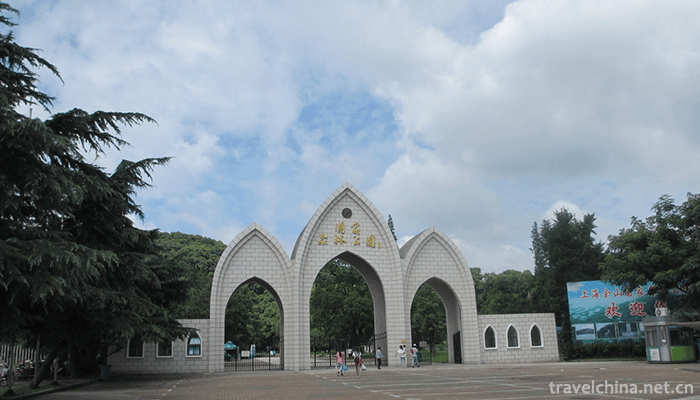

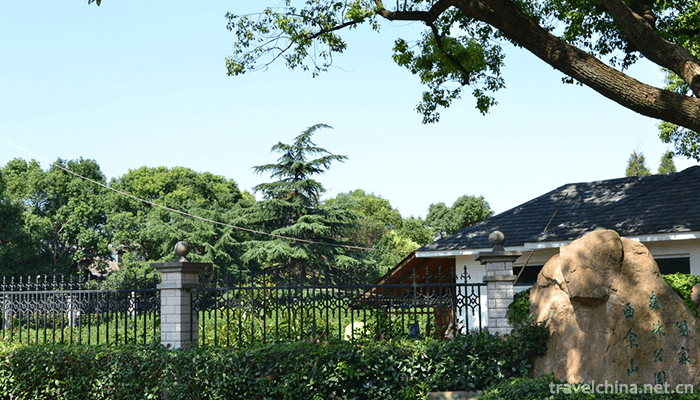
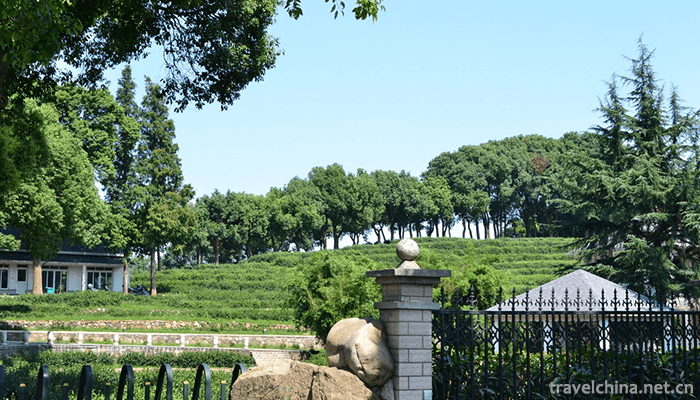


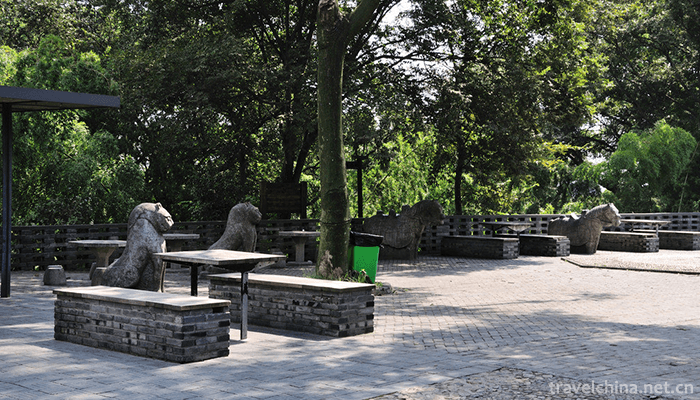
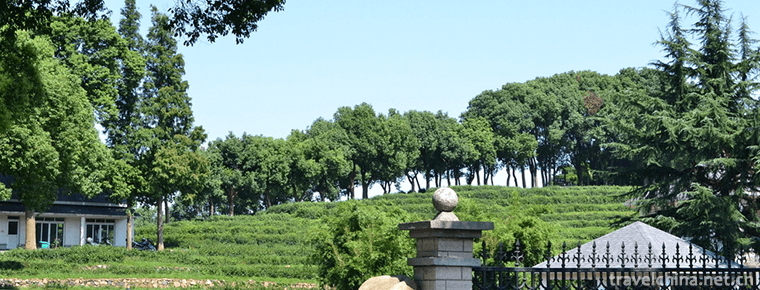
-
1.Gold medal suckling pig
Roasted Suckling Pig. Characteristic: It has won the "Golden Ding Award" by the national commercial department. It is a precious Cantonese dish at the banquet.
Time 2018-11-14 -
2.Ming Ming Dynasty Tombs Scenic Area
Ming Tombs, World Cultural Heritage, National Key Cultural Relics Protection Units, National Key Scenic Spots, National AAAAA Tourist Scenic Spots.
Time 2018-11-24 -
3.Kanas Scenic Area in Altay Area
Kanas Scenic Area is located in the middle section of Altai Mountain in Xinjiang, which is located in the border area between China and Kazakhstan, Russia and Mongolia
Time 2018-12-12 -
4.Jinshan City Beach Shanghai
Jinshan City Beach is located in Jinshan District of Shanghai, located in the southwest of Shanghai and the North Bank of Hangzhou Bay. It is adjacent to Pinghu and Jiashan City in Zhejiang Province
Time 2018-12-19 -
5.Yanmenguan Scenic Area
Yanmenguan Scenic Spot is located in the northern part of Daizhou ancient city. South-controlled Central Plains and North-controlled Moyuan are grand military defense projects of ancient Chinese passe
Time 2019-03-01 -
6.Bemo music
Qubila fire is well known in Meigu County, Liangshan Prefecture. He is not only a highly respected Yi Dabimo, but also a representative successor of national intangible cultural heritage projects.
Time 2019-04-04 -
7.Mashan folk songs
Mashan Folk Song is a traditional folk song form which is popular in the area of Mashan Town, Jingzhou District, Jingzhou City, Hubei Province. One of China's national intangible cultural heritage lis
Time 2019-05-15 -
8.Beach Head Wood Engraving New Year Pictures
Tantou woodcut New Year's picture is the only handmade woodcut watermarking New Year's picture in Hunan Province. It has its own style with strong local characteristics in southern Chu. Tantou Town is
Time 2019-06-18 -
9.Southwest University of Finance and Economics
Southwest University of Finance and Economics is a national key university under the Ministry of Education's "211 Project" and "985 Project" dominant disciplines innovation platfor
Time 2019-08-31 -
10.Bozhou University
Bozhou College (Bozhou University), for short, is located in Bo Yuan. Anhui Province Bozhou City By the state Ministry of Education Approved full-time full-time undergraduate institutions.
Time 2019-11-08 -
11.The announcer Ding Zhen will not be on duty until half a year later
On December 6, just after yesterday's live media broadcast, Ding Zhen met with more than 20 fans from all over the country to take photos at noon. Ding Zhen is no longer as shy and helpless as he was when he first met a stranger. After half a month's popularity,
Time 2020-12-06 -
12.Introduction to Panzhihua
Panzhihua, a prefecture level city of Sichuan Province, is located in the southernmost end of Sichuan Province, 614 km away from Chengdu in the north, 273 km from Kunming in the South and Lijiang and Dali in the West; it is located in the central and southern section of Panxi Rift
Time 2020-12-14